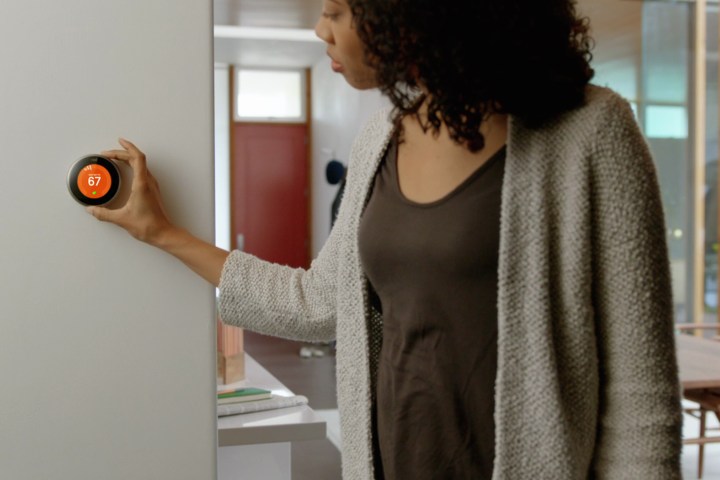
“It’s a really simple, effective program,” Noah Horowitz, senior scientist and director of the Natural Resources Defense Council’s Center for Energy Efficiency, told Digital Trends. Those looking to buy an energy-efficient laptop, TV, washing machine, ceiling fan, or dozens of other product categories can check for the Energy Star blue-and-white logo and know what they’re getting. “There’s a lot of brand recognition, and all the manufacturers, retailers, and utilities have bought into it,” said Horowitz. “It’s delivered massive results.”
What’s behind the logo?
The aim of the program is to give people an easy way to spot energy-efficient equipment without having to compare kilowatt-hours. It compares fridges across manufacturers that are the same size and awards Energy Star designations to the ones that meet its standard. In addition, there’s the Energy Star Most Efficient program, which singles out the products that use the least energy among those that receive the rating. As manufacturers become better at meeting the standards — to the point where 50 percent of fridges on the market meet it — the EPA revises it, so fridge makers have to come up with new and innovative ways to save energy. But that’s only if they want the Energy Star label. “This is not a mandatory program,” said Horowitz.

“Appliances tell an incredible story of energy efficiency, which has been achieved through a combination of mandatory federal standards and product innovation,” Jill Notini, vice president of communications and marketing for the Association of Home Appliance Manufacturers, told Digital Trends. “For example, an average 20-cubic-foot household refrigerator that was shipped last year used only as much energy as a 50-watt incandescent light bulb. While appliances with an Energy Star designation may be super efficient, even non-Energy Star appliances have dramatically increased their efficiency through standards and technology advances.”
Aiming for efficiency
The question is whether that’s a chicken-and-egg scenario, though. As manufacturers try to out-compete each other in energy efficiency, the innovations trickle down to less-expensive models, until they become standardized. Especially with appliances, customers are always looking for ways to reduce utility bills. “We do a lot of consumer research, and energy efficiency for appliance shoppers is always a very important consideration,” John Taylor, LG’s vice president of public affairs and communications, told Digital Trends. He said the company has been looking for ways to increase efficiency, regardless of whether products get the Energy Star label. The EPA awarded the company an Emerging Technology Award for its hybrid heat pump dryer in 2014. It was one of the technologies, along with sensors, that prompted Energy Star to start awarding labels to dryers that same year. “There wasn’t an Energy Star dryer program, but we were one of the companies that was pushing for that for years,” said Taylor.
“Even non-Energy Star appliances have dramatically increased their efficiency through standards and technology advances.”
There’s a reason the industry pushed for the logo on dryers: it’s a signal to customers. “Energy Star fills a need,” Lowell Ungar, a senior policy adviser for the American Council for an Energy-Efficient Economy, told Digital Trends. “Energy efficiency is not visible, but consumers care about it, and the EPA has managed the brand well so that consumers recognize the label and trust that it means real energy savings.”
“It’s kind of evolved to connote more than just energy efficiency,” said Taylor of the logo. “I think people correctly connect it to product quality and performance.” To qualify for the logo, manufacturers have to send their products to an approved lab for independent testing, and Energy Star performs “spot checks,” buying models from retailers to ensure customers are getting the same quality. “Without Energy Star, which is a trusted brand that has a lot of integrity, in the absence of it, all the manufacturers will make claims, some of which are not true,” said Horowitz. “It opens the door for a lot of greenwashing.” Greenwashing happens despite regulations, of course. In 2015, Dyson and Bosch counter-sued each other over claims that the latter was rigging its efficiency tests to make its vacuums seem more eco-friendly than they really were.
That’s why the EPA uses random checks and independent verification. “Energy Star is a voluntary program,” said Unger. “It only matters if consumers trust that labeled products save energy and money. So, it is important that an independent manager sets the criteria for the label through a rigorous and transparent process, and that reliable, independent testing ensures that the labeled products actually earn the label.”
Increased incentives
There’s another reason people might look for the logo when purchasing a new appliance or TV. Buying an Energy Star water heater could get you a rebate, though the amount varies based on where you live. Utilities have invested heavily in them, putting up over $5 billion for incentive programs in 2016, according to Horowitz. “If the whole program and its infrastructure goes away, I’m not sure the utilities are able to continue to offer those rebates, and without those rebates, a lot of the manufacturers lose the incentive to make their products as efficient as they are today,” he said.

What exactly will happen to the Energy Star at this point isn’t clear. “We are not commenting at this early stage in the process,” Julia Valentine, an EPA spokesperson, told Digital Trends. It could become privatized or become part of the Department of Energy. “Moving the programs back to the Department of Energy makes sense because that is where the product knowledge resides, along with the development of the test procedures and standards which are the foundation for the Energy Star program,” said Notini.
Horowitz hopes the program survives, because he said it delivers over $30 billion in utility savings each year. “There’s a lot of great infrastructure here,” he said. “It would be a shame to see it go away.”
Edited 3/18/2017: Edited to correct Noah Horowitz’s title and the change the NRDC from National to Natural Resources Defense Council.


